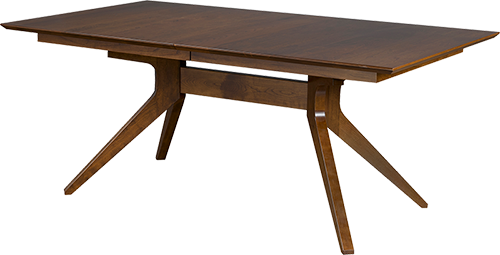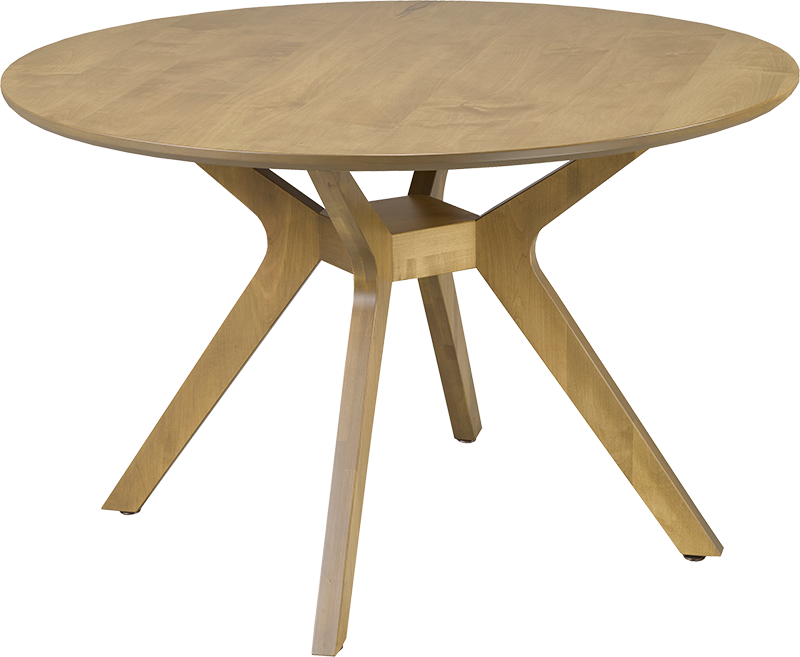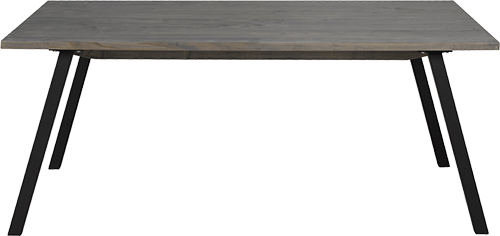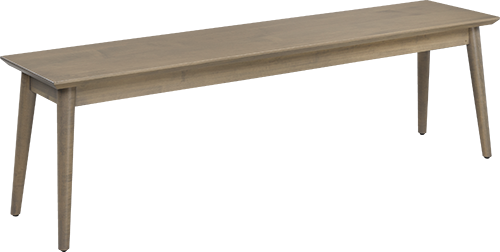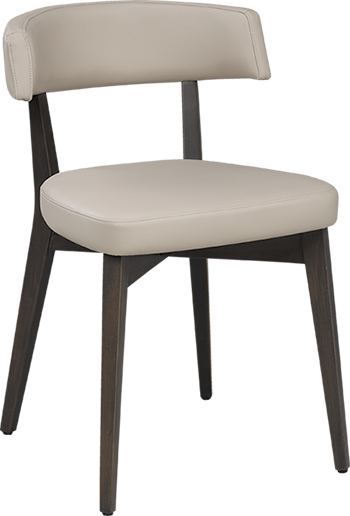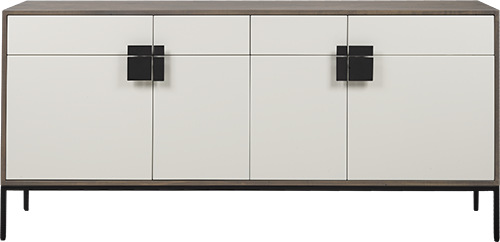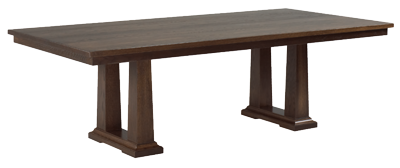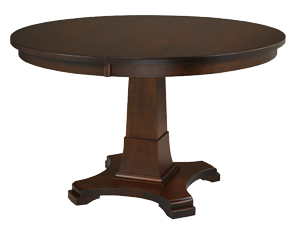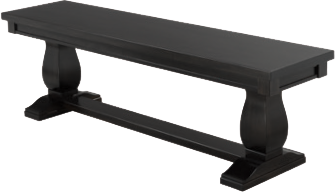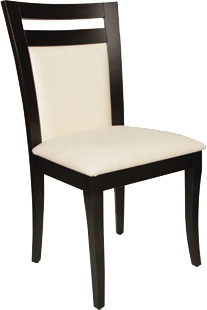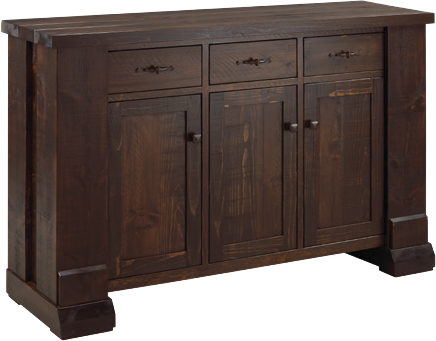Top Textures
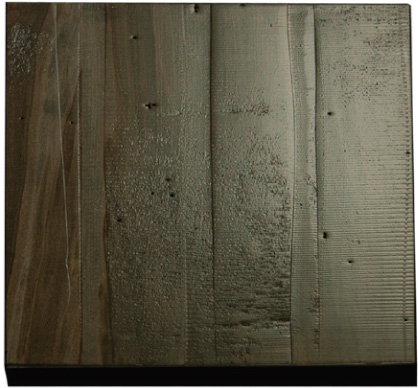
Hand planed
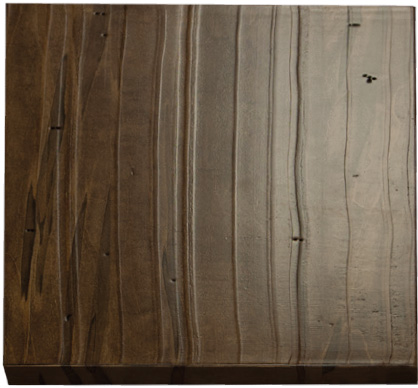
Hand Scraped
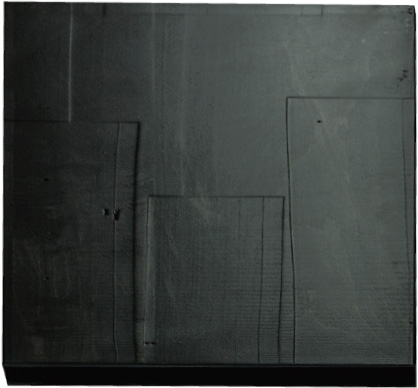
Hand Scraped
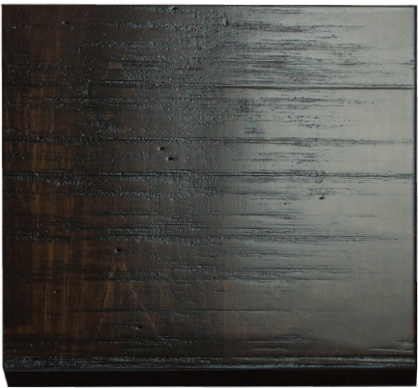
Ruff Cut
Solid wood care & maintenance
With a little care and maintenance, solid wood furniture can retain its original beauty and durability for a lifetime. However, for this to be possible, we have outlined some of the measures that need to be taken.
Below are a few tips to maintain your solid wood furniture
- Maintain your environment at a rate of 40% – 50% relative humidity to prevent swelling, shrinking, warping and cracking
- Keep your furniture away from direct sunlight or heat sources such as forced air, fire places, and radiators
- Clean your furniture with water only, as solvents can damage the finish
- Do not place hot objects directly onto the surface of a table
Configurations
CENTRE EXTENSION CONFIGURATION
PROS
- Easy to extend and retract
- Lengthen or shorten your table easily as necessary to accommodate your guests
- Extra leaves can be stored inside the table top
CONS
- Leaf storage inside table may not accommodate all leaves—some leaves may need to be stored elsewhere
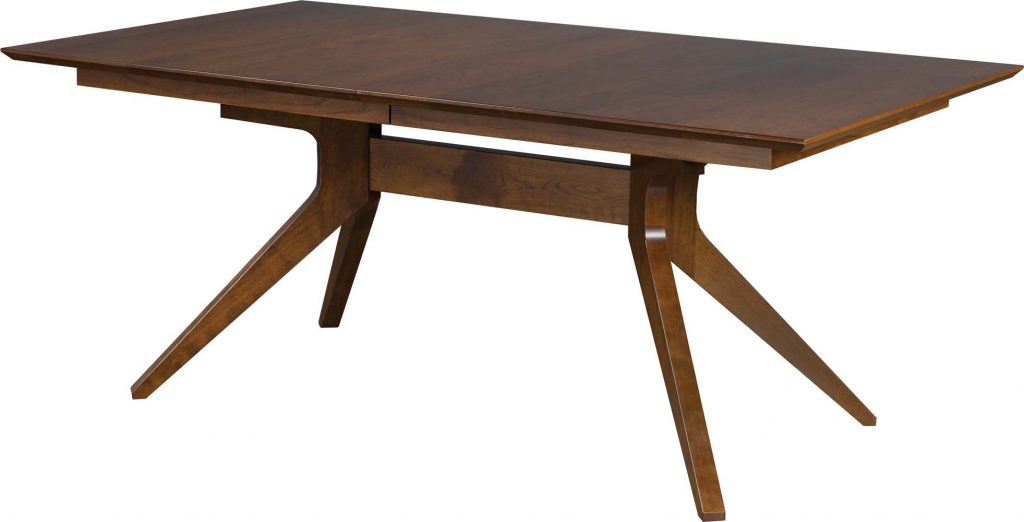
Solid top CONFIGURATION
Solid top configuration means the size of your table top always stays the same.
PROS
- Aesthetically pleasing, no table leaf joints—stunning impression left by large, smooth table top area
- No need to store extra leaves
CONS
- Table cannot be lengthened or shortened to accommodate various group sizes
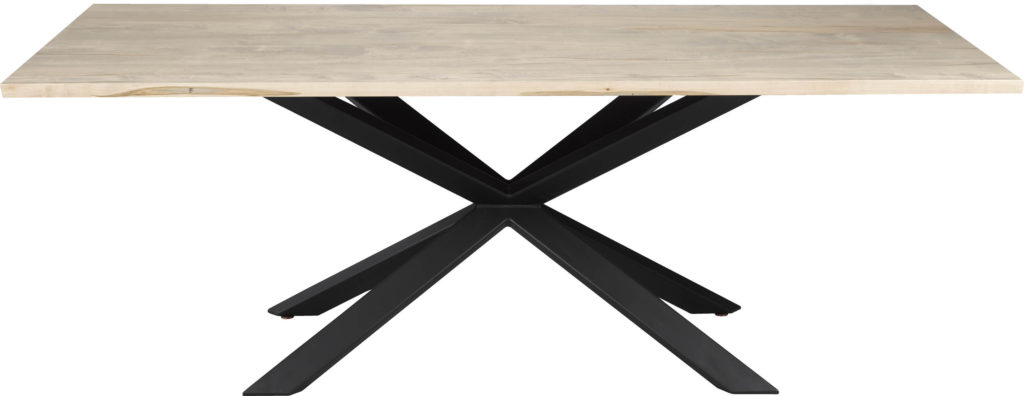
Solid top CONFIGURATION with end extension option
Solid top configuration with end extension option means your fixed length table can be lengthened if the need arises.
PROS
- Adds length to a fixed length table when needed
CONS
- End extensions cannot be stored in table—leaves need to be stored in closet area when not in use
- End extensions can be unwieldy to handle and store
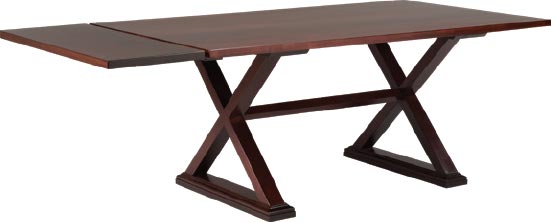
Features
Leaf Storage Constraints
Depending on the configuration of your table, it may accommodate up to 2 leaves stored beneath the top. This handy feature means you don’t need to worry about storing your leaves in a closet where they could accumulate scratches or dings.
Below are listed the terms of storage.
- No storage on single pedestal tables
- No storage on tables that are totally round or square when closed
- 36” width tables store 12” of extensions
- 42” width tables store 24” of extensions
- 42” wide stationary base tables with lengths longer than 84” plus two 12” extensions only store 12” of extensions
- 48” width tables store 24” of extensions
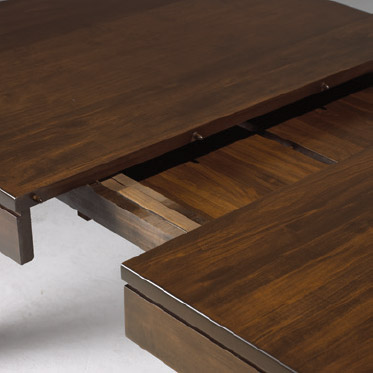
Table Top Grain Direction
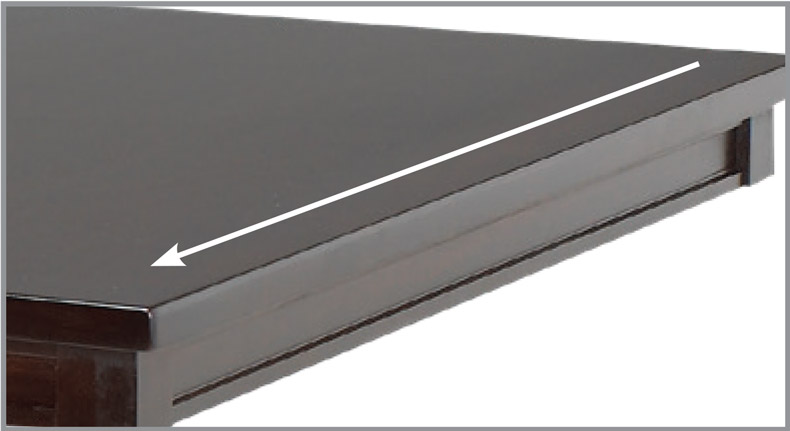
Centre Extension Configuration
Grain pattern travels from side to side, the width of the table
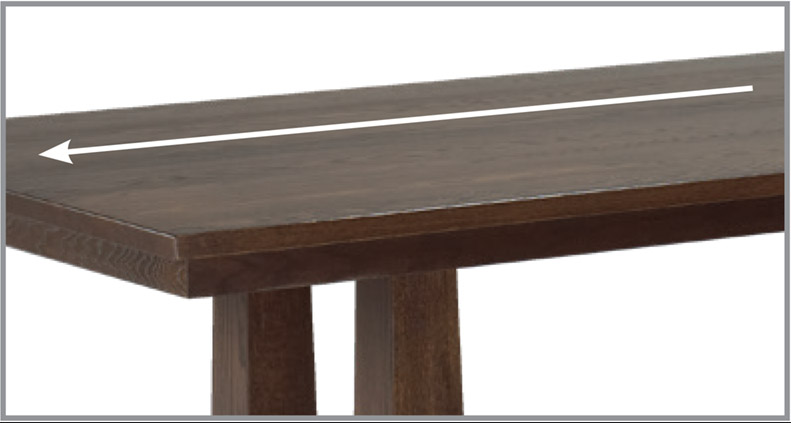
Solid Top Configuration
Grain pattern travels from end to end, the length of the table
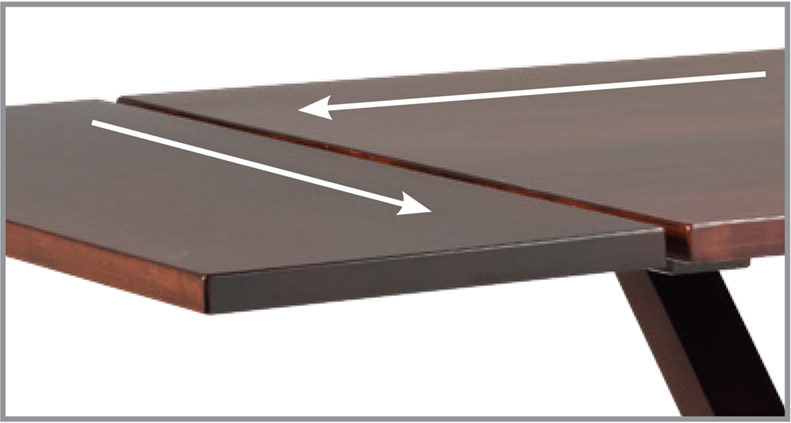
Solid Top with End Extension
On the main table section grain pattern travels
from end to end, the length of the table
On the end extensions grain travels from side to side, the width of the table.
Wood Types
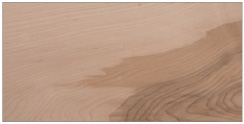
Brown Hard Maple (BHM)
The sap wood is creamy white with a slight reddish brown tinge. The heartwood varies from light to dark reddish brown. The colour of the heartwood can vary with the growing region. It has a close, fine and uniform texture and is generally straight grained. Brown Hard Maple is when the heartwood is no defect and contains a mixture of brown heartwood and white sapwood. This works for furniture that gets finished in a dark colour. The hardness on the Janka ball scale is 1450.
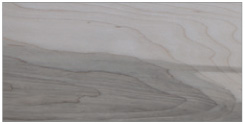
Brown Soft Maple (BSM)
In most respects Soft Maple is very similar to Hard Maple, and is in conflict with its
name is a hardwood. Generally the sapwood is grayish white, sometimes with darker coloured pith flecks. The heartwood varies from light to dark reddish brown. The wood is usually straight grained. Brown Soft Maple is when the heartwood is no defect and contains a mixture of brown heartwood and white sapwood. This works for furniture that gets finished in a dark colour. The hardness on the Janka ball scale is 950.
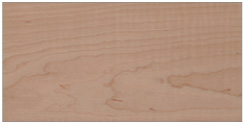
Curly soft Maple (CSM)
Curly Soft Maple comes from the same tree as Soft Maple and Brown Soft Maple. We select the figured or curly boards from the regular maple and use them to make a unique species. The grain pattern creates a 3D effect that appears as if the grain has curled. If finished correctly, curly maple is very eye catching. The hardness on the Janka ball scale is 950.
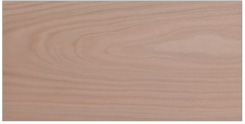
Cherry premium (C)
Yellow pink sapwood with reddish brown to deep red heartwood. Colour deepens with age and exposure. Fine uniform, straight grain, satiny smooth texture, and may naturally contain brown pith flecks and small gum pockets. Cherry (premium) is when the wood gets selected for the red heartwood and the white sapwood is a defect. The hardness on the Janka ball scale is 950.
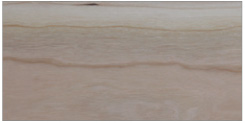
Cherry Sappy (CS)
Yellow pink sapwood with reddish brown to deep red heartwood. Colour deepens with
age and exposure. Fine uniform, straight grain, satiny smooth texture, and may naturally contain brown pith flecks and small gum pockets. Cherry (sappy) is when the wood doesn’t get sorted and you get a mixture of red heartwood and white sapwood. This works for furniture that gets finished in a dark colour. The hardness on the Janka ball scale is 950.
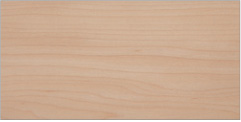
White Hard maple (HM)
The sap wood is creamy white with a slight reddish brown tinge. The heartwood varies from light to dark reddish brown. The colour of the heartwood can vary with the growing region. It has a close, fine and uniform texture and is generally straight grained. White Hard Maple is when the wood is selected for white sapwood and the heartwood is a defect. This is used when furniture gets finished in a light colour. The hardness on the Janka ball scale is 1450.
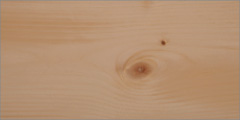
Eastern White Pine (P)
Eastern White Pine is now widely grown in plantation forestry. It is creamy white or a pale straw colour. Knots are an excepted characteristic of pine. We use straight “one common” grade pine which demands only tight knots and less defects. The knots are also smaller and aren’t as black and course as the knots in lower grade pine. The hardness on the Janka ball scale is 380.
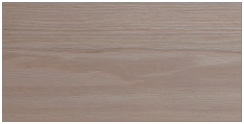
Red Oak (O)
Varies in colour between regions. Mostly straight grained with a course texture. Heartwood is a pinkish reddish brown. Sapwood is a light brown colour. The hardness on the Janka ball scale is 1290.
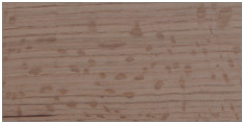
Quarter Sawn Red Oak (Q)
The quarter slicing cut produces a straight grain effect. The quarter log is mounted on the table so that the growth rings hit the blade at right angles. A flake pattern is produced when slicing through medullary rays in some species, principally oak. The hardness on the Janka ball scale is 1290.
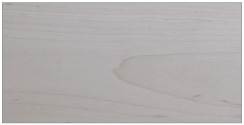
White Soft Maple (SM)
In most respects Soft Maple is very similar to Hard Maple, and in conflict with its name is a hardwood. Generally the sapwood is grayish white, sometimes with darker coloured pith flecks. The heartwood varies from light to dark reddish brown. The wood is usually straight grained. White Soft Maple is when the wood is selected for white sapwood and the heartwood is a defect. This is used when furniture gets finished in a light colour. The hardness on the Janka ball scale is 950.
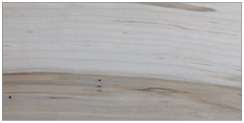
Wormy Maple (WM)
Wormy maple comes from regular soft maple trees that have been infested by the ambrosia beetle. The small beetle bores a network of tunnels and short galleries called cradles. A fungus is responsible for the black and gray streaks that accompany each tunnel and adjacent wood. The streaks add a unique look to this hardwood without affecting its structural integrity and as the wood is kiln dried, will contain no beetles. This wood is mostly found in the central part of Eastern United States. The hardness on the Janka ball scale is 950.


